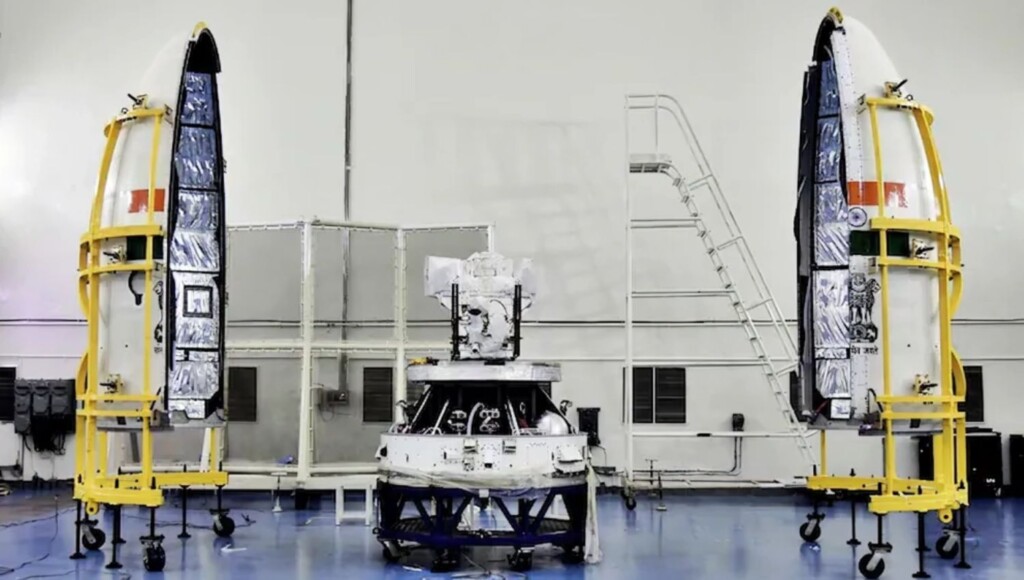In summary,
- The satellite is outfitted with three primary payloads.
- These payloads are intended to improve the satellite’s functionality across a range of applications.
- They will serve purposes such as environmental monitoring, disaster response, and scientific investigation.
The Indian Space Research Organisation (Isro) is preparing to launch its newest Earth Observation Satellite, EOS-08, on August 16, 2024. This mission will utilize the Small Satellite Launch Vehicle (SSLV)-D3 from the Satish Dhawan Space Centre located in Sriharikota. The launch, initially scheduled for August 15, has been postponed to August 16, although Isro has not provided an explanation for this adjustment.
WHAT IS EOS-08?
EOS-08 represents a groundbreaking mission developed on Isro’s Microsat/IMS-1 platform, incorporating a variety of cutting-edge technologies. The satellite is outfitted with three primary payloads: the Electro Optical Infrared Payload (EOIR), the Global Navigation Satellite System-Reflectometry payload (GNSS-R), and the SiC UV Dosimeter.
These payloads are intended to augment the satellite’s functionality across multiple domains, including environmental monitoring, disaster response, and scientific exploration.
The EOIR payload is capable of capturing images in both the Mid-Wave and Long-Wave infrared spectra, allowing it to operate efficiently during both daytime and nighttime. Mid-Wave Infrared (MWIR) and Long-Wave Infrared (LWIR) represent wavelengths of light that are invisible to the human eye but can be perceived as heat. Satellites utilize these wavelengths to observe and analyze the Earth’s surface.
This technology is instrumental for satellites in identifying warm objects, such as fires or heated areas of the Earth. It plays a vital role in detecting phenomena like wildfires, volcanic eruptions, and specific meteorological patterns. Such capabilities are essential for applications including satellite-based surveillance, fire detection, disaster assessment, and monitoring volcanic activity.
OCEAN MONITORING
The GNSS-R payload is set to showcase the application of GNSS-R-based remote sensing techniques for the evaluation of ocean surface winds, the measurement of soil moisture, and the investigation of the cryosphere in the Himalayan region, among various other uses.
In addition, the SiC UV Dosimeter will be employed to monitor ultraviolet irradiance and function as a high-dose alarm sensor for gamma radiation, which is particularly beneficial for the Gaganyaan Mission.
Ultraviolet irradiance refers to the quantification of the amount of ultraviolet (UV) light emitted by the sun that reaches a specific location. UV light, an invisible form of energy produced by the sun, can lead to sunburn and other skin-related effects.
A NEW GENERATION BEGINS
EOS-08 signifies a notable progression in satellite technology, featuring advancements in satellite mainframe systems. This includes an integrated avionics system, adaptable solar panels, and a phased array antenna, all designed to improve the satellite’s performance and efficiency. Weighing approximately 175.5 kg, the satellite is anticipated to function in a low Earth orbit at an altitude of 475 km for a duration of around one year. This mission not only concludes the SSLV Development Project but also paves the way for future operational missions by the Indian industry and NewSpace India Limited (NSIL), highlighting India’s expanding capabilities in space exploration and satellite technology.
